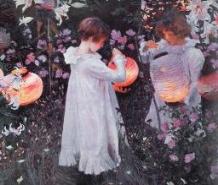Technical Approach to Portrait Painting

One of the reasons that I enjoy painting so much is that it is a bit like solving a puzzle. Before I start to paint I spend a lot of time looking at my subject and preparing in my mind’s eye how I am going to go about achieving the representation I want. The beauty is that as you get more knowledgeable about the artistic effects and techniques available to you, so the puzzle becomes more complex. The quality of the finished painting, the solved puzzle if you like, improves and the process of painting just gets more and more rewarding.
While this doesn’t mean that I don’t like to follow my inspirations during a portrait painting (which you should definitely do), it does mean that I make a lot of decisions before I have even put oil paint on my brush. My aim is to go through these now and then on into the portrait painting process itself. I have tried to write it so that the reader will be able to make an important decision about their next painting at the end of each page.


Did you like this page?